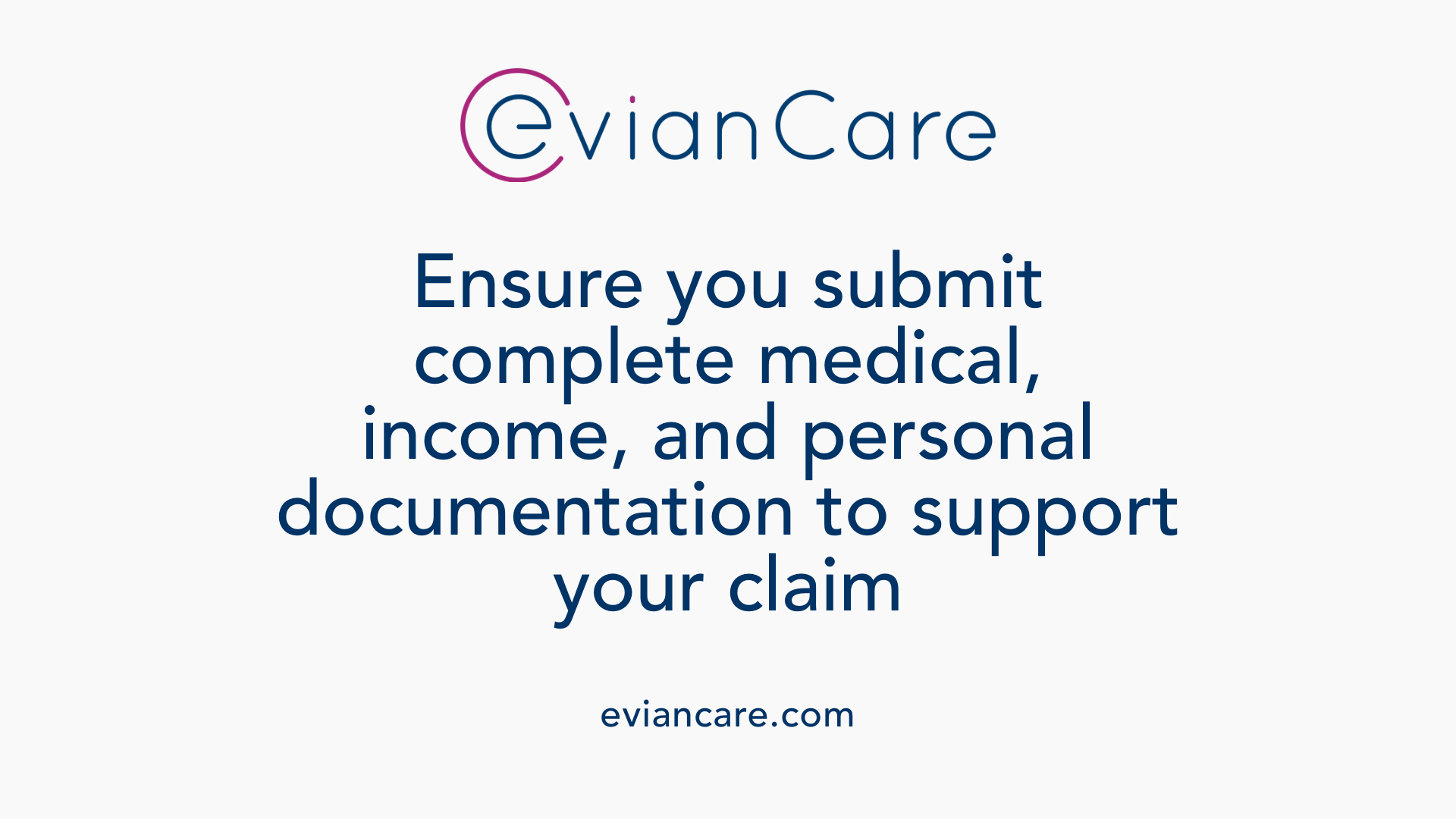
A Comprehensive Guide for Adults
Navigating the complexities of Social Security disability benefits can seem daunting. This guide aims to clarify eligibility criteria, application processes, legal considerations, and available resources to help adults understand how to access the support they need when facing disabilities that impede employment.
Eligibility Criteria for SSDI and SSI

What are the eligibility criteria for SSDI and SSI?
Understanding the requirements for Social Security disability benefits is essential for potential applicants. The Social Security Administration (SSA) classifies these benefits into two main categories: SSDI (Social Security Disability Insurance) and SSI (Supplemental Security Income). While both serve to support disabled individuals, their eligibility standards differ significantly.
SSDI (Social Security Disability Insurance) is primarily based on work history. To qualify, individuals must have accumulated enough work credits through paying Social Security taxes during their employment years. Typically, they need around 40 credits, with at least 20 earned in the last 10 years, but this can vary depending on age. Moreover, applicants must have a medically determinable physical or mental impairment that prevents them from engaging in substantial gainful activity (SGA) for at least 12 months or is expected to result in death.
The SSA evaluates disability through a detailed process that considers the severity of the condition and how it impacts the ability to work. The disability must interfere significantly with basic work activities, such as lifting, walking, or concentrating.
SSI (Supplemental Security Income) focuses on financial need rather than work history. It is available to disabled adults and children with limited income and resources. To qualify, individuals must meet strict income limits—generally around $2,019 per month for individuals—and resource limits of $2,000 for individuals and $3,000 for couples.
SSI also requires applicants to be either disabled or over 65 years old, with specific criteria on residency and citizenship or immigration status. The program is needs-based and generally aimed at those with minimal income and savings.
Differences Between Work-Based and Needs-Based Benefits
| Feature | SSDI | SSI |
|---|---|---|
| Basis of Eligibility | Work history and work credits | Income and resource limits |
| Target Group | Insured individuals with sufficient work history | Low-income disabled persons, elderly, or blind |
| Medical Requirements | Must meet SSA’s disability criteria | Same SSA criteria for disability |
| Benefits Amount | Varies based on earnings and work credits | Fixed federal amount, supplemented by state benefits |
| Application Process | Medical evidence, employment history | Medical evidence, income, and resources evaluations |
Additional Notes
Applicants who qualify for SSDI are also often eligible for Medicare after 24 months of receiving benefits, making healthcare accessible. Conversely, SSI recipients may also qualify for Medicaid and additional support programs.
Applying for SSDI or SSI involves submitting medical records, employment details, and financial information. The process can be complex and may require appeals, especially if initial claims are denied. It’s advisable to consult official SSA resources or legal experts when considering application steps.
Applying for Benefits: Steps and Documentation

How do I apply for Social Security Disability benefits and what are the steps involved?
Applying for SSD benefits involves several steps to ensure your claim is properly processed. You can start your application online via the Social Security Administration (SSA) website, by calling their toll-free number, 1-800-772-1213, or by visiting your local SSA office in person. Before beginning, it’s important to gather all necessary documents, including your Social Security number, details about your employment, medical records, and evidence of ongoing treatment.
Once you have your documents ready, you can complete the application through your preferred method. Be prepared to provide detailed information about your medical condition, how it affects your ability to work, and your personal details such as address and contact information. After submitting your application, the SSA will review your case, which might include requesting additional medical evidence or scheduling assessments.
The review process can take several months, and you will be notified of the outcome. If your claim is denied, you have the right to appeal within 60 days, and it’s advisable to do so promptly to avoid delays in benefit processing. Many applicants find that providing thorough and accurate information helps in securing approval on appeal.
Reporting Requirements and Necessary Documentation

What are the reporting requirements and necessary documentation for SSD benefits?
Applying for Social Security Disability (SSD) benefits involves providing a comprehensive set of documents to substantiate your claim. This documentation helps the Social Security Administration (SSA) determine your eligibility based on medical, personal, and financial criteria.
First, proof of identity is essential. Commonly accepted documents include original or certified copies of your birth certificate, passport, or other government-issued ID. If you are not a U.S. citizen, you must provide proof of lawful alien status or citizenship documentation.
Medical evidence is a cornerstone of SSD claims. Applicants must submit recent doctor reports, detailed medical records, test results, and documentation of treatments received. These help establish the severity and duration of your medical condition and its impact on your ability to work.
In addition, financial documentation is necessary. This includes W-2 forms, tax returns, pay stubs, and records of any other income sources. If you are receiving other benefits, such as workers' compensation or military benefits, you should document these as well.
Depending on personal circumstances, extra records might be needed. For example, marital history details may be relevant, particularly for Benefits to Disabled Adult Children. Military discharge papers (DD-214) are required if your disability relates to military service. If you are applying based on a mental or developmental disability, adult disability forms might be necessary.
It’s advisable to gather all pertinent documents beforehand to streamline your application process. Submitting complete and accurate documentation increases your chances of a successful claim and reduces delays caused by additional requests for information.
For an efficient SSD application, consult the SSA’s guidance by searching
Navigating the Appeals Process and Increasing Chances of Success

What is the appeals process for denied disability claims?
Many individuals applying for Social Security Disability benefits encounter initial denials, which can be disheartening. Fortunately, the SSA provides a structured appeals process that helps applicants challenge unfavorable decisions. Understanding this process is crucial to increase the likelihood of securing benefits.
The appeals process involves four main stages. First, if your claim is denied, you can request a reconsideration within 60 days of receiving the denial notice. During this phase, your case is reviewed again, and additional evidence can be submitted to support your claim.
If the reconsideration still results in denial, the next step is to request a hearing before an administrative law judge. This hearing provides an opportunity to present your case in person, with evidence and witness testimony. Again, this request must be made within 60 days of the reconsideration decision.
Should the judge's decision be unfavorable, you can appeal to the SSA’s Appeals Council, which will review the case and make a decision. This step is essential for further reconsideration before resorting to the courts.
Finally, if you disagree with the Appeals Council’s review, you may file a lawsuit in federal district court within 60 days of the final SSA decision. Throughout these stages, it’s vital to submit supporting evidence, such as medical records and expert opinions, and adhere to all deadlines.
Expert legal support can significantly improve your chances, especially during hearings and legal proceedings. Preparing a comprehensive case with proper documentation and possibly legal representation can be the difference between approval and continued denial.
Being persistent and well-informed about each step can make your appeal process smoother. Patience and attention to detail are essential, as most successful claimants go through multiple levels of review before receiving benefits.
Legal and Practical Tips for Applicants
When applying for Social Security Disability benefits, understanding the legal and practical aspects of the process can significantly influence your success. One of the foremost considerations is providing accurate and comprehensive medical documentation. The SSA requires detailed medical records, doctors’ reports, and laboratory results that demonstrate the extent of your disability and how it impairs your ability to work. Submitting incomplete or incorrect information may lead to delays or denials.
Legal considerations include awareness of ongoing reporting obligations. Applicants must promptly inform SSA of any changes in their medical condition, work activity, income, address, or personal details such as marriage or divorce. Failure to report these changes can jeopardize eligibility or lead to legal issues, including overpayments or benefit suspension.
Working with legal professionals or advocacy groups can enhance your application’s strength. Experienced disability attorneys or advocates are familiar with SSA rules and can assist in gathering the necessary documentation, preparing for hearings, and navigating appeals if initial claims are denied. Their expertise can improve your chances of receiving benefits and help manage complex procedural steps.
Adherence to work and income rules is crucial. For job activity, SSA allows individuals to work while applying for benefits as long as earnings do not exceed Substantial Gainful Activity (SGA) limits, which are $1,620/month in 2025. Exceeding this can disqualify you from benefits. Additionally, applicants must be vigilant about reporting employment or income changes regularly to avoid legal complications.
Ensure you understand your rights regarding benefit payments, reporting obligations, and potential appeals. Benefits are paid monthly, and missing payments or receiving benefits under false pretenses can have serious legal repercussions. If you face denial, the appeals process—including reconsideration and hearings—has strict deadlines, typically 60 days, within which you should act.
In summary, proper documentation, timely reporting, and seeking legal support are effective strategies to secure and maintain SSD benefits. Familiarize yourself with SSA rules, seek professional assistance when needed, and stay informed about your responsibilities to prevent legal pitfalls and support your disability claims process.
| Legal considerations | Practical tips | Examples |
|---|---|---|
| Accurate documentation | Work with advocates | Medical records submission |
| Reporting changes | Comply with income rules | Update SSA of address or work status |
| Legal support | Seek legal counsel | Assistance with appeals |
| Income limits | Monitor earnings | Avoid exceeding Substantial Gainful Activity |
| Timely actions | Be aware of deadlines | File appeals within 60 days |
| Understanding rights | Know reporting requirements | Report significant life changes |
Resources, Support, and Continuous Assistance
Are there resources and support available for SSD applicants?
Yes, numerous resources and support systems are in place to assist individuals applying for SSD benefits. The Department of Social Services (DSS) offers help with completing application forms, gathering necessary documentation, and providing medical proof of disability. They also offer accommodations for individuals with disabilities to ensure accessible communication.
The Social Security Administration (SSA) provides several online tools that simplify the application process. The 'my Social Security' account allows users to check application status, update personal information, and manage benefits conveniently from home. The SSA also offers the Disability Starter Kit, a comprehensive guide that helps applicants understand the process, prepare their documentation, and learn about their rights.
Additional support programs include SOAR (SSI/SSDI Outreach, Access, and Recovery), designed to help vulnerable populations access benefits efficiently. MED-Connect offers medical support and coordination to streamline healthcare access for applicants. Furthermore, mental health services and housing assistance are available to those who qualify, providing holistic support during the application journey.
These resources aim to make the SSD application process less stressful and more accessible, ensuring that individuals receive the assistance they need to secure benefits and improve their quality of life.
Transitioning and Planning for Future Benefits
Will my disability benefits change when I turn 65?
When you reach full retirement age, which is typically between 66 and 67 depending on your birth year, your Social Security Disability Insurance (SSDI) benefits automatically convert into retirement benefits. This process is seamless, and for most individuals, the amount they receive remains unchanged. There is no loss or increase in your monthly benefit due to this conversion.
Medicare coverage associated with SSDI also continues without interruption once your benefits convert at age 65 or after you've been receiving SSDI for 24 months. This ensures that your access to healthcare remains steady without the need for reapplication or additional steps.
It's important to distinguish between SSDI and Supplemental Security Income (SSI). Unlike SSDI, SSI benefits do not convert to retirement benefits. Instead, they are needs-based and depend on your income and resource levels. As long as you continue to meet the eligibility criteria, SSI benefits will continue independently of age.
Overall, most SSDI recipients will notice no change in their monthly benefit amounts or Medicare coverage once they transition to retirement benefits at age 65. This designed process allows for a smooth financial and healthcare planning experience as individuals age.
Key Insights and Resources
Understanding the process of navigating social security disability benefits is crucial for adults facing disabilities. From determining eligibility, applying properly, providing accurate documentation, to appealing denials, each step demands awareness and preparedness. Support systems and legal resources are available to bolster applicants’ chances of approval and ongoing compliance. As benefits transition at age 65, planning ahead ensures financial stability and continuous access to healthcare. Staying informed about policies, reporting obligations, and available support is essential for maximizing the benefit potential and maintaining peace of mind during challenging times.
References
- [PDF] What You Need to Know When You Get Social Security Disability ...
- SSDI and SSI benefits for people with disabilities | USAGov
- Navigating the Complexities of Social Security Disability Benefits
- What You Need to Know About Getting Disability Benefits from the ...
- A Guide to Social Security Disability Insurance Benefits
- Understanding SSI and SSDI Benefits: What You Need to Know
- Social Security Disability Insurance (SSDI) for Adults Disabled Since ...
- How Does Someone Become Eligible? | Disability Benefits - SSA
- Supplemental Security Income SSI Eligibility Requirements - SSA
- SSDI and SSI benefits for people with disabilities | USAGov












